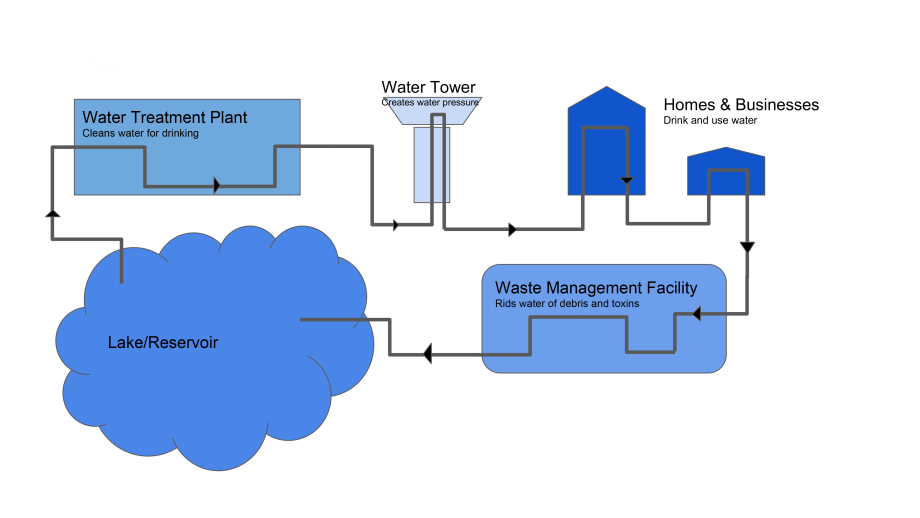In the early 20th century, water treatment facilities throughout the U.S. began using chlorine to disinfect their water supplies. This treatment process greatly reduced waterborne pathogens in the water supply and nearly eradicated cases of dysentery and typhoid fever — both of which were responsible for countless deaths each year up until that point.

"Disinfection of drinking water is arguably the greatest public health achievement of the last century," said Guanghui Hua, a civil engineering professor at South Dakota State University's Jerome J. Lohr College of Engineering.
Today, chlorine is still widely used in conventional water treatment systems. In South Dakota, most facilities use at least some chlorine to kill dangerous bacteria and/or microorganisms during the treatment process.
While experts agree that using chlorine continues to be an effective treatment method, an unintended consequence has been the formation of disinfection byproducts, which occur when chlorine reacts with naturally occurring organic compounds that are found in water resources. A new collaborative project from SDSU and South Dakota School of Mines and Technology will study these byproducts while also developing a novel water treatment approach that minimizes or prevents the formation of these potentially harmful byproducts.
Hua will serve as the primary investigator on this $206,472 National Science Foundation-backed project. He will continue his research on disinfection byproducts, a subject he has been studying continuously since completing his doctorate in 2006.
First discovery of byproducts
In the 1970s, scientists first detected trihalomethane, a type of disinfection byproduct, in treated drinking water. The U.S. Environmental Protection Agency then conducted widespread surveys to confirm the presence of disinfection byproducts in chlorine-treated water throughout the country.
Studies were then done to understand what effect disinfection byproducts may have on humans. Research determined that chronic consumption of water with disinfection byproducts could elevate one's risk of developing cancer. The Centers for Disease Control and Prevention notes that "humans exposed to unusually large amounts of some (disinfection byproducts) could experience liver damage and decreased nervous system activity."
To combat these risks, the EPA introduced containment measures and rules to lower the amount of trihalomethane allowed in drinking water. Today, the EPA has set regulations for a variety of disinfection byproducts found in treated drinking water.
A new byproduct
More recently, researchers have become aware of iodinated disinfection byproducts — a more toxic type of disinfectant byproduct that is currently unregulated by the EPA.
"(Iodinated disinfection byproducts) are formed when chemical oxidants such as chlorine react with inorganic iodine and iodinated organic compounds during the disinfection of drinking water sources," Hua said. "These compounds often come from iodinated X-ray contrast media."
Iodinated X-ray contrast media is necessary for medical diagnostic procedures and is used extensively by CT scanners. While essential for hospitals and clinics around the world, contrast media eventually finds its way into sewage water, surface water and drinking water, where it reacts with chlorine to form these toxic byproducts. Areas downriver from hospital wastewater discharges are at heightened risk of encountering these byproducts.
"Most everything we produce will eventually find its way into our water," Hua said.
Since the initial discovery, researchers and scientists have been searching for ways to remove them from the drinking water without creating other unintended consequences. One way to combat these disinfection byproducts is to convert toxic iodinated compounds to iodate, a nontoxic trace element. On paper, this process is simple; however, most water treatment facilities do not currently have the ability to efficiently make this conversion happen due to a variety of reasons.
The project's primary goal will be to develop an efficient water treatment approach for converting iodinated compounds, while at the same time continuing to combat regulated disinfection byproducts.

"The overarching goal of this project is to advance the fundamental science and engineering knowledge required to control emerging (iodinated disinfection byproducts) and regulated (disinfection byproducts) in drinking water treatment," Hua said.
During this project, the primary investigators from both SDSU and South Dakota Mines will conduct outreach efforts with drinking water treatment professionals in South Dakota to address water quality challenges in the state.
"The successful completion of this project will benefit society through the development of new fundamental knowledge that could guide the design and deployment of more effective water treatment processes and systems," Hua said.
The project is slated to last approximately three years.
- Contact:
- Telephone number: 605-688-6161
Republishing
You may republish SDSU News Center articles for free, online or in print. Questions? Contact us at sdsu.news@sdstate.edu or 605-688-6161.

